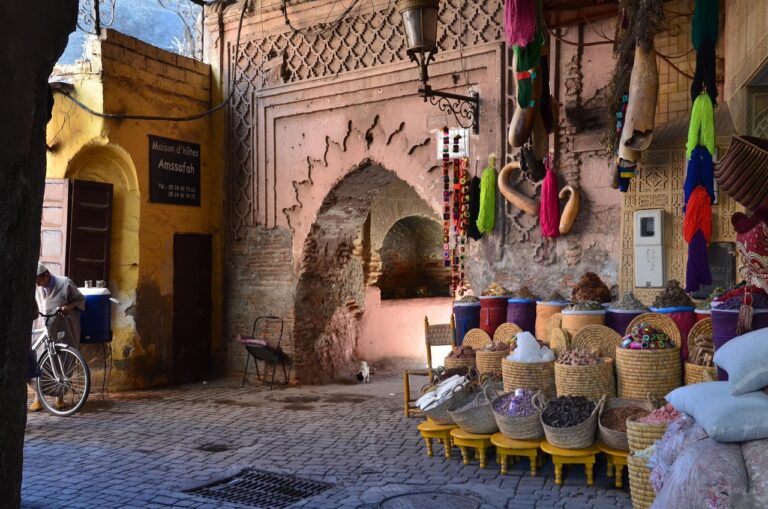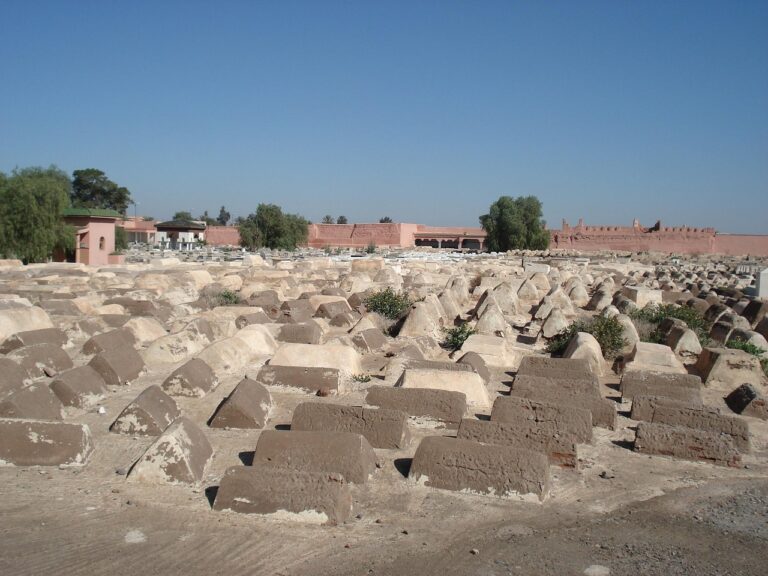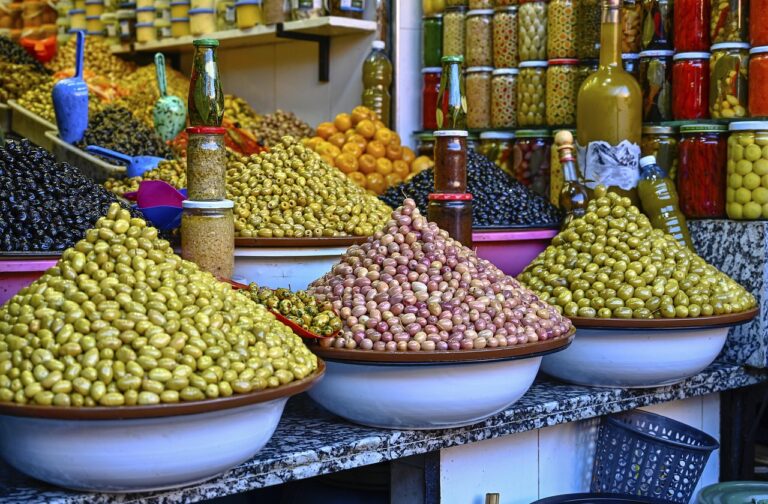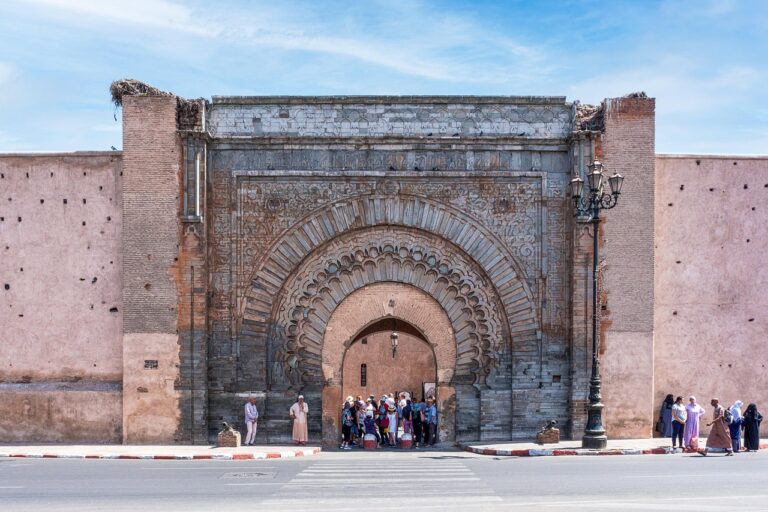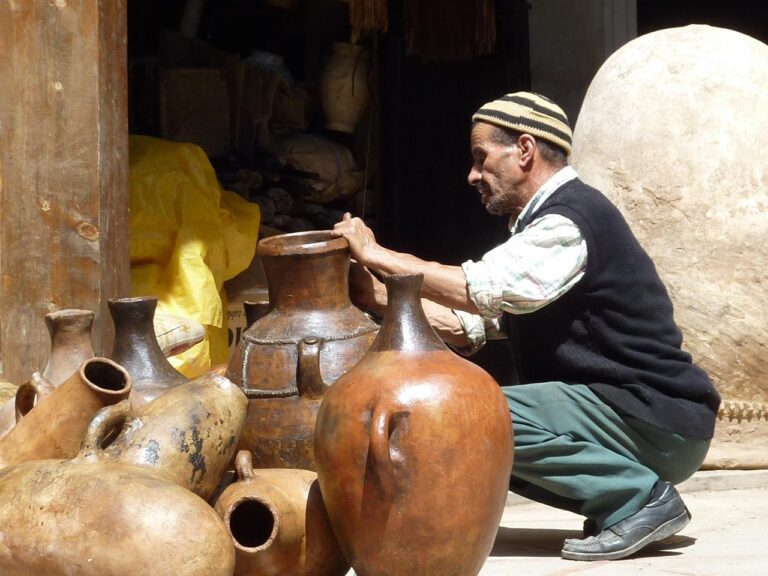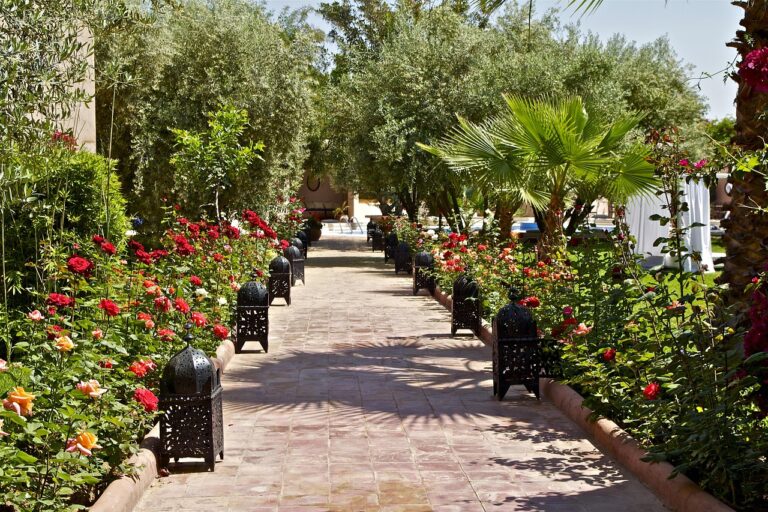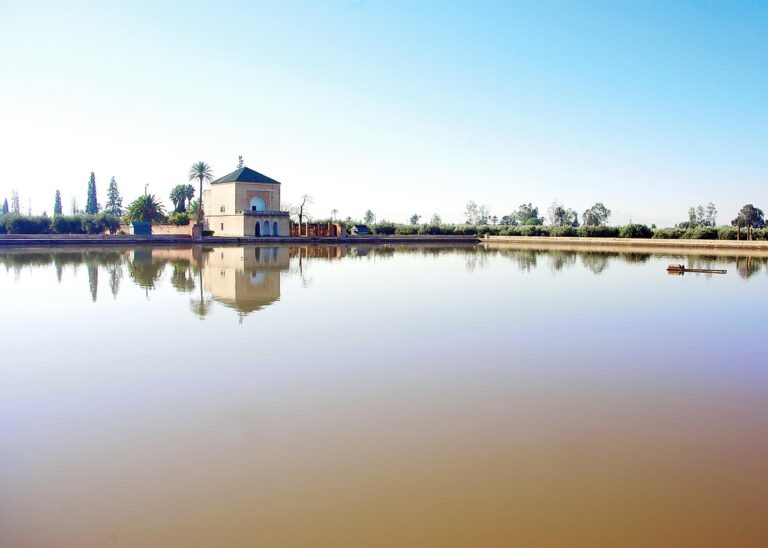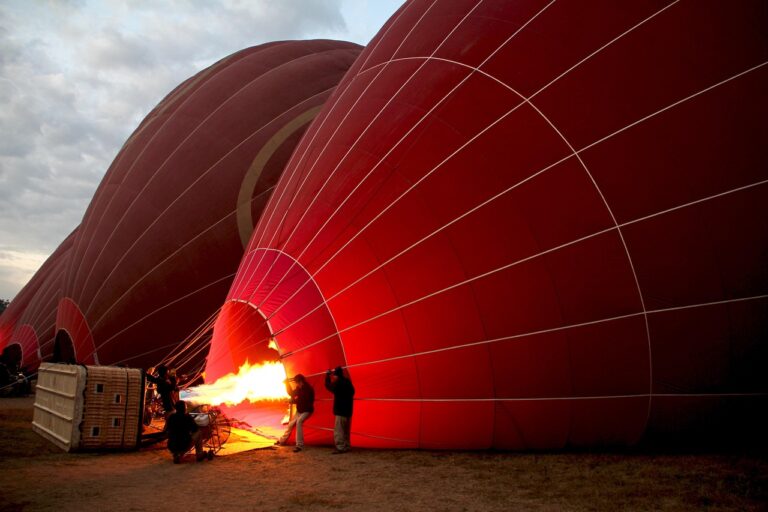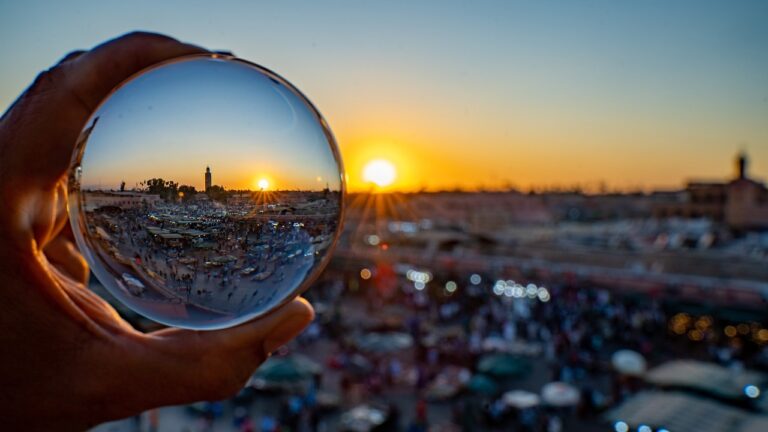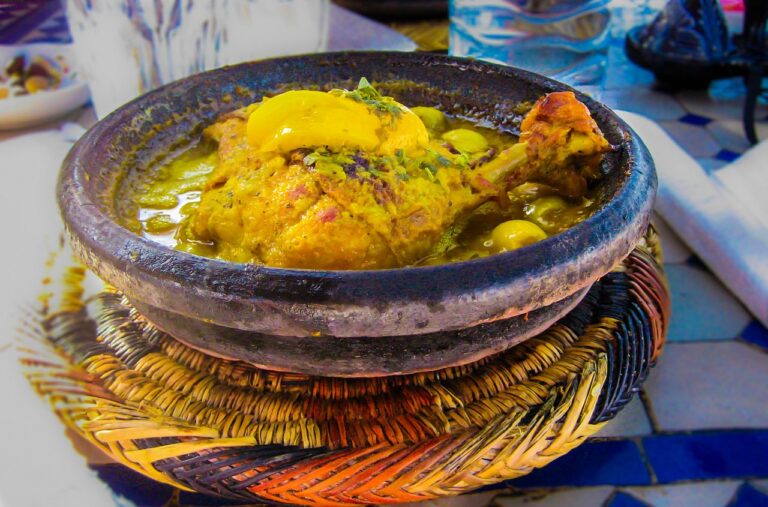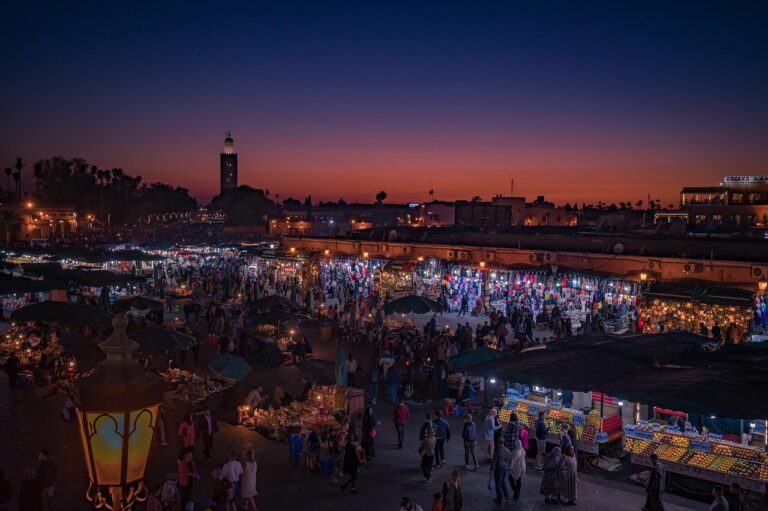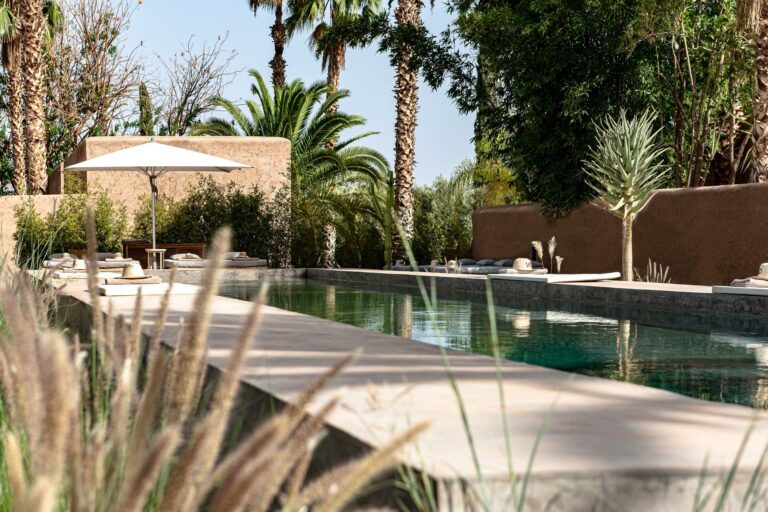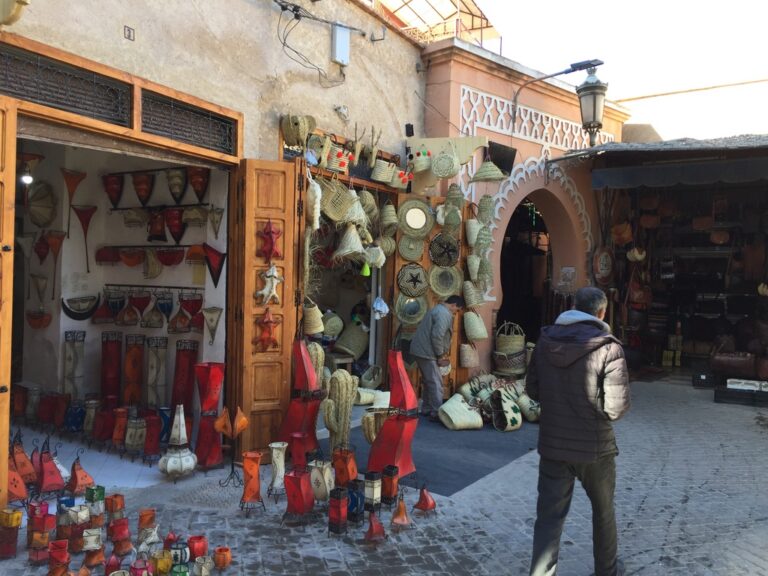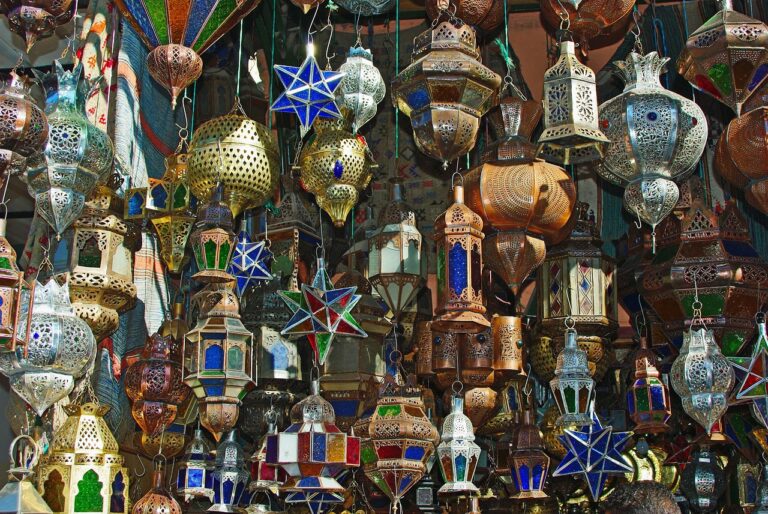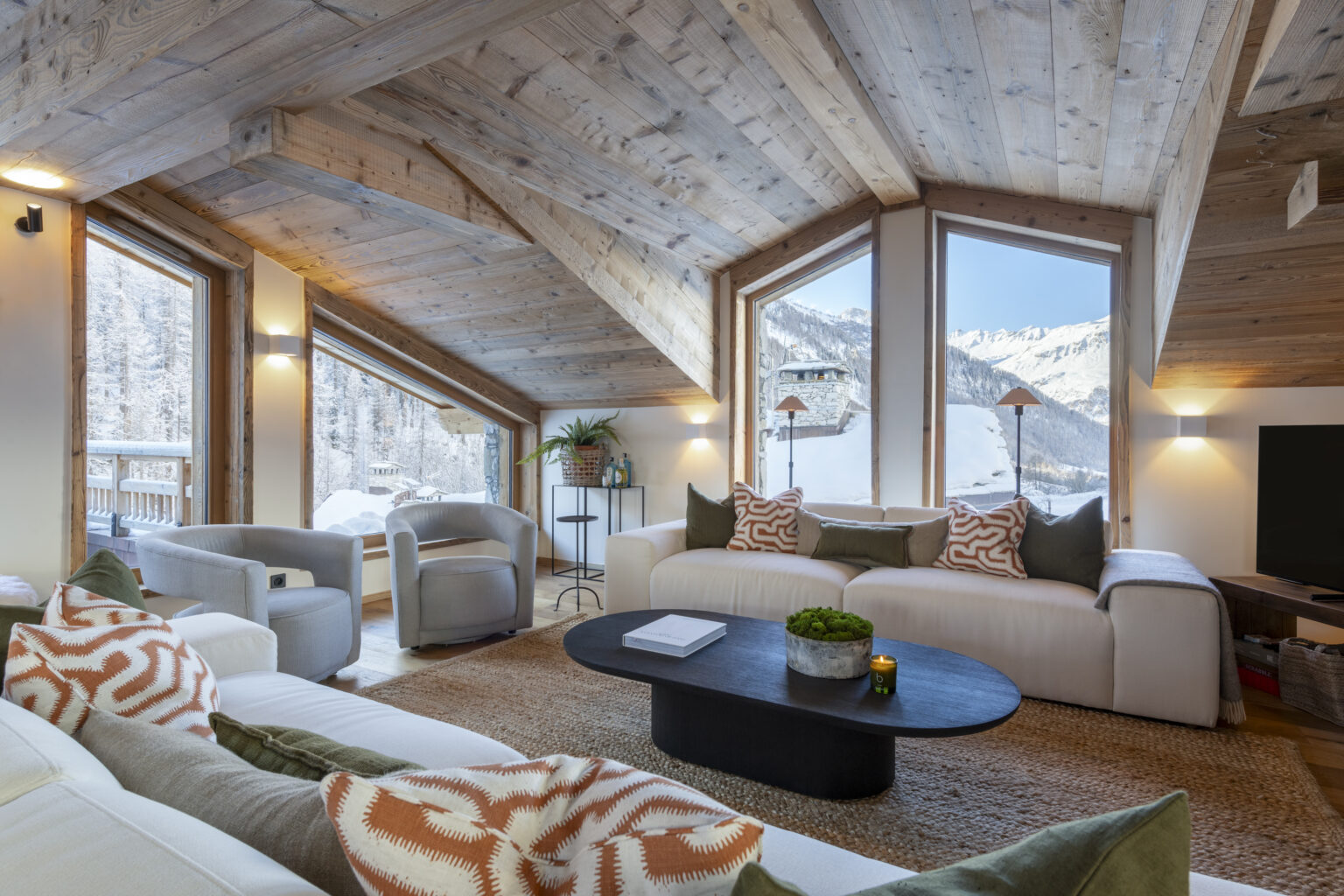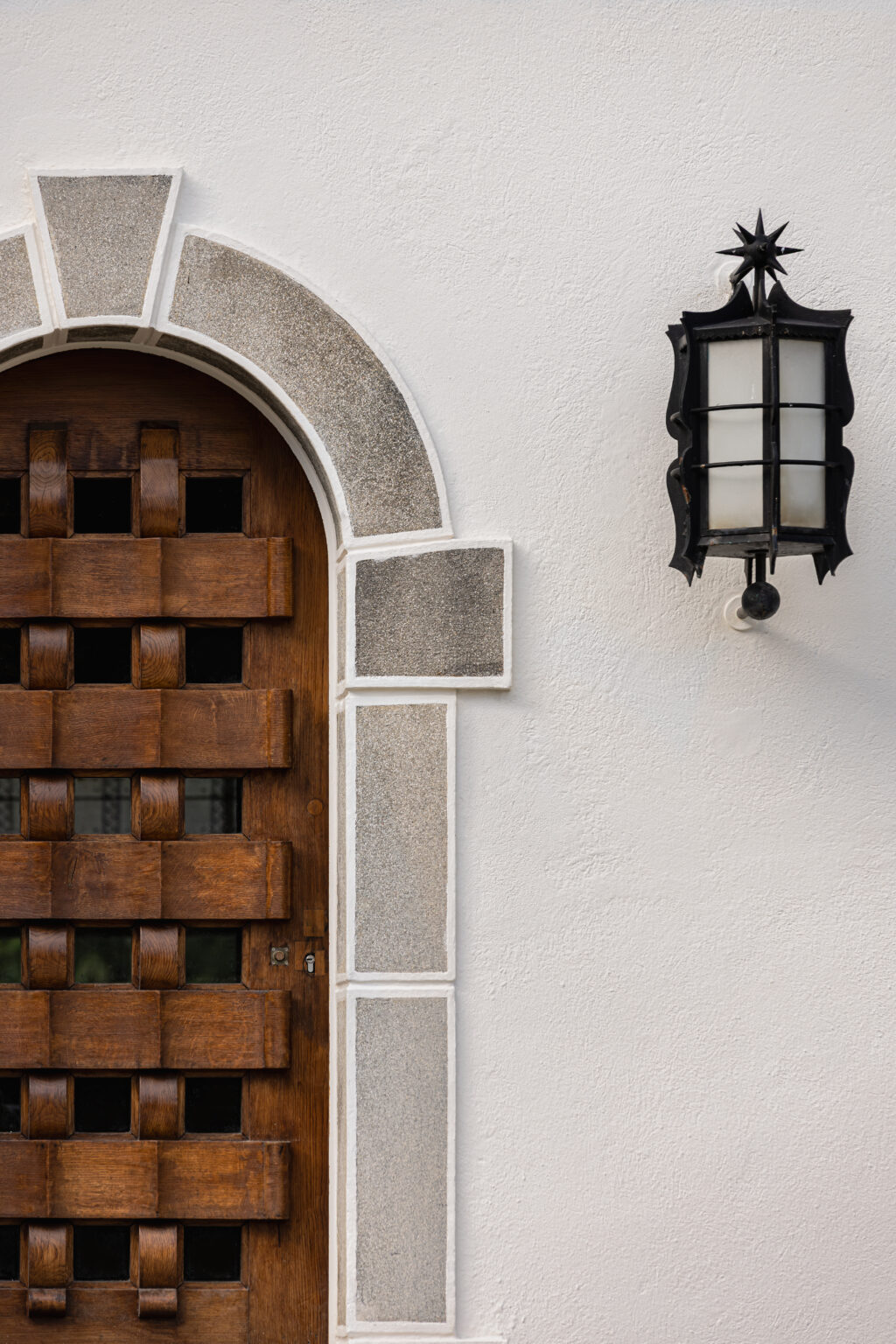Looking for things to do in Marrakech? The city’s stark contrasts will engage you right from your first step. Most visitors see the main attractions in 2-3 days, but this ancient metropolis holds much more beneath its surface.
Marrakech, established in 1070, houses more than a million people and naturally combines its rich history with modern vibrancy. The city’s heart beats in its Medina, a UNESCO World Heritage Site since 1985, which features Morocco’s largest maze of souks. The iconic Jardin Majorelle (designed in the 1920s) and the stunning 14th century Medersa Ben Youssef stand proud, while countless hidden gems wait for curious travellers to explore them.
This piece takes you off the tourist path to find Marrakech’s best-kept secrets that most visitors miss. Your understanding of this fascinating and diverse destination will change through unique experiences – from quiet gardens and city views to authentic food adventures and lesser-known historical sites.
Explore the hidden corners of the Medina
The maze-like Medina of Marrakech keeps secrets that most tourists never find. Past the busy main squares, you’ll spot hidden neighbourhoods full of real-life experiences perfect for bold travellers. These quiet corners show you the true daily life of locals and paint a picture of the city’s rich cultural mix.
1. Bab Doukkala and its local markets
Rue Bab Doukkala Market gives you a real taste of local Marrakech life. Unlike the tourist-packed souks near Djemaa El Fna, this lively marketplace buzzes with genuine Moroccan energy. The narrow pathways lead you past copper wares, handcrafted baskets, clothing and everyday items that locals buy.
The food here makes this place special. You’ll see mountains of plump olives next to fresh-baked bread, juicy lamb brochettes and sweet Moroccan oranges. The market’s skewer stalls steal the show—beef, chicken, liver and spicy merguez sausages soaked in fragrant Moroccan spices cook over glowing coals. Their smell fills the air.
This part feels nothing like other areas of the Medina. Many visitors say they were the only Europeans around. But this authenticity comes with a catch—vendors know their tourists and prices can jump between locals and visitors. A bread that costs locals 1 dirham might cost tourists 5 dirham.
2. The Mellah: Jewish quarter with a story
Near the Royal Palace sits the Mellah—Marrakech’s historic Jewish quarter that’s 465 years old. This district grew into Morocco’s largest Mellah during the 19th century, with 35,000 residents. Today, these streets tell stories about the city’s mixed cultural past.
The Mellah’s unique architecture stands out from other parts of the Medina. Key spots include:
The Lazama Synagogue and its Jewish cemetery—Morocco’s largest Jewish community built this in 1537
A memorial space for about 7,000 children who died in a 19th-century typhus outbreak
Traditional Jewish buildings with distinct design elements
The Mellah’s population changed drastically over time. By 1936, only 15,000 Jews lived in the quarter. After Israel’s creation in 1948, numbers dropped more, and now fewer than ten Jewish residents live in the original Mellah.
All the same, the area keeps its unique character. Tinsmiths Square (Place des Ferblantiers) remains the heart of this district. Here, craftsmen carry on the metalwork tradition that Jewish artisans started centuries ago. The spice markets are excellent too, especially when you have rosewater, saffron and argan oil to choose from.
3. Mouassine district and its artisan shops
Just 500 metres north of Djemaa El Fna, the Mouassine district has become Marrakech’s coolest shopping spot. This trendy neighbourhood mixes history with modern style, making it perfect for anyone looking beyond typical tourist spots.
The area shows off amazing 16th-century Saadian architecture, from beautiful merchants’ houses like Dar Cherifa to Le Jardin Secret’s stunning palace gardens. The beautiful Musée de Mouassine houses the Musée de la Musique, where you can catch concerts three nights each week.
Rue Mouassine packs in plenty of artisan shops. You’ll spot stylish boutiques selling everything from coloured scented candles to traditional Berber instruments. Al Nour stands out as a women’s cooperative that sells hand-embroidered scarves and fine linen made by handicapped women—beautiful products that make a difference.
Mouassine also serves up some of the Medina’s best food. Nomad and La Terrasse des Épices offer rooftop dining that’s worth booking early. Local life merges naturally with tourist spots here—hanouts (Moroccan domestic shops), carpenters, and even motorcycle repair shops run right next to tourist boutiques.
Visit lesser-known historical sites
Past the busy souks, Marrakech holds a rich historical legacy in its ancient monuments. Many visitors miss these architectural treasures that tell stories of multiple dynasties and centuries of Moroccan heritage.
1. Almoravid Koubba: the oldest building in Marrakech
The Almoravid Koubba stands just 40 metres from Ben Youssef Mosque. Built in 1117, it’s Marrakech’s oldest surviving structure. This architectural gem is the last remaining example of Almoravid architecture in the city. It’s a must-see spot for anyone looking to explore beyond typical tourist spots.
The Koubba started as an ablutions pavilion where people washed before prayer. It used a groundbreaking hydraulic system that provided toilets, showers and drinking water. French scholars found this hidden structure in 1947, and deeper excavations followed in the 1950s.
The building’s beauty shines through its rich interior decoration. Standing 12 metres tall, the structure shows beautifully preserved floral patterns and Arabic calligraphy on its walls. The ceiling’s most striking feature is North Africa’s oldest example of Mahgrebi cursive Arabic. The dome matches those in Cordoba’s Great Mosque and shows Morocco’s earliest muqarnas decorations in its corners.
You can visit this hidden gem daily from 9:00 AM to 5:00 PM. It offers a unique glimpse into Marrakech’s early architectural history.
2. Dar Si Said Museum: Moroccan arts and crafts
Close to the Bahia Palace sits Dar Si Said, a beautiful late 19th-century palace that’s now a museum. Art lovers count it among Marrakech’s best attractions. Si Sa’id ibn Musa, a vizier and defence minister serving under his brother Ba Ahmad, built this grand structure between 1894 and 1900.
The palace split between museum space and the Service de l’Artisanat after Morocco gained independence in 1957. It opened again in 2018 as the National Museum of Weaving and Carpets, showing off Morocco’s rich textile traditions.
The museum displays artefacts from Marrakech and nearby areas including the Atlas mountains and Tafilalet. Visitors see wooden architectural pieces, religious objects, jewellery, ceramics, weapons, carpets and embroidery. Before its 2018 change, the museum had an Andalusi marble basin made between 1002-1007 at Madinat al-Zahra.
The September 2023 earthquake damaged Dar Si Said badly, and it remains closed for repairs. Once it opens again, the grand palace with its huge patios, two floors and beautiful decorative elements will be a highlight of any visit.
3. Saadian Tombs: a quiet necropolis
The Saadian Tombs stand as one of Marrakech’s hidden treasures. This royal burial ground dates back to the Saadian dynasty. Sultan Ahmad al-Mansur built it in the 16th century, and it holds more than 60 members of the Saadi family.
The tombs stayed active after al-Mansur died in 1603. Later, Alaouite Sultan Moulay Ismail sealed them off to erase his predecessors’ memory. French aerial photography revealed them again in 1917 during the Protectorate period. The Service des Beaux-Arts restored the site carefully, keeping its original character intact.
The Chamber of Twelve Pillars forms the heart of this complex. Its dome ceiling rests on three groups of four marble columns. Two columns came from the ancient Roman city of Volubilis. This grand chamber shows off detailed zellige tilework and gold honeycomb muqarnas. It serves as al-Mansur’s final resting place along with his sons.
Other tomb rooms surround this central chamber, including the Chamber of Three Niches for special princes. The courtyard has another mausoleum built in 1557 for al-Mansur’s mother, Lalla Massouda. You’ll find 56 tombstones with marble epitaphs here, plus about a hundred more graves marked with colourful tiles.
The site took some damage in the September 2023 earthquake but welcomed visitors again in October 2023 after repairs. Travellers can now explore this remarkable piece of Marrakech’s history once more.
Unwind in secret gardens
Need a break from Marrakech’s buzzing energy? The city’s hidden gardens are perfect spots to catch your breath. These green havens let you escape the busy souks and crowded spots while you take in some amazing garden designs.
1. Le Jardin Secret: Islamic and exotic gardens
Le Jardin Secret sits right in the Medina’s heart and gives you one of Marrakech’s most amazing botanical experiences. This historic site is more than 400 years old, dating back to the Saadian Dynasty. A powerful kaid from the Atlas Mountains had it rebuilt in the mid-19th century. The former palace opened its doors to the public for the first time just a few years ago.
You’ll find two distinct garden spaces here. The Islamic Garden shows off a traditional four-part layout based on Paradise’s description in the Quran, with four rivers that represent wine, water, milk and honey. Rows of citrus trees create what’s known as a bustan – a scented orchard.
The smaller Exotic Garden paints a picture with textures and colours. British designer Tom Stuart-Smith created this modern take using vibrant plants from places with similar weather—Australia, Southern California, the Mediterranean, Canary Islands and Madagascar. You can walk along herringbone-patterned dirt paths and see elegant grasses, striking succulents, and blooming perennials.
The garden’s star feature is its restored khettara—an old underground watering system the Almoravids brought to Marrakech in the 11th century. This clever system uses just gravity to move water through the whole complex.
2. Menara Gardens: olive groves and mountain views
The Menara Gardens show you a different side of Marrakech’s green spaces. This huge 100-hectare park sits near the city’s international airport. Abd al-Mu’min, an Almohad ruler, built these peaceful grounds in the 12th century. The garden’s centrepiece is a massive reflecting pool (200 × 150 metres) that gets its water from the Atlas Mountains through 30 kilometres of underground channels.
The garden’s main attraction is its huge olive grove with perfectly lined-up trees that are hundreds of years old. Cypress, palm, and other trees mix with the olives to create one of Marrakech’s key green spaces.
A beautiful pavilion stands by the lake. People call it the “Pleasure Pavilion” because sultans supposedly used it for their secret love meetings. This two-story building shows off detailed decorations with muqarnas patterns, carved wood, plasterwork and mosaics.
The view steals the show here. Snow-topped Atlas Mountains mirror in the still pool water—a sight photographers love to capture.
3. ANIMA Garden: art meets nature
ANIMA Garden sits just outside Marrakech and might be the city’s most unique garden experience. Austrian artist André Heller created this three-hectare “botanical staging” where art and nature come together beautifully.
Shady paths wind through hundreds of plant types—bamboo, palms, cacti, and lots of flowering plants. What makes ANIMA special are the huge sculptures by famous artists like Pablo Picasso, Keith Haring, Alexander Calder and Auguste Rodin that stand among the green surroundings.
The garden lets you see the Atlas Mountains in all their glory, with the 4,167-metre Jbel Toubkal as a backdrop. Two museum rooms display art from around the world. You can grab a bite at Café Paul Bowles, which serves tasty Moroccan food made with spices and ingredients grown in the garden—saffron, herbs, and olives.
Getting to ANIMA is easy. A free shuttle bus takes you right there.
Experience Marrakech from above
Marrakech’s most stunning views await those who look up! The city reveals its true beauty from high above, where spectacular views showcase this ancient metropolis against the Atlas Mountains backdrop. These bird’s-eye views light up the Red City‘s layout in ways you never imagined.
1. Hot air balloon ride at sunrise
A silent float above Marrakech at dawn creates pure magic. Your adventure starts with an early hotel pickup and a drive to the launch site in the surrounding countryside.
The balloon comes to life in the pre-dawn light. You can enjoy pastries, orange juice, and coffee before climbing into the spacious basket. This experience has:
A breathtaking 40-50 minute balloon journey
Panoramic views of the Atlas Mountains, desert valleys, and the awakening city
Altitudes ranging from 300 to 1,000 metres
The first golden rays of sun make this experience magical. “Watching Marrakech unfold from a hot air balloon is like stepping into a different world”. The endless horizon shows striking contrasts between sprawling deserts, lush green patches, and the distant Atlas Mountain peaks.
Many operators serve a traditional Berber breakfast after landing. You’ll enjoy cornbread, pancakes, eggs, olives, fresh fruit, and mint tea. A commemorative flight certificate marks your adventure.
Spring (March to May) and autumn (September to November) offer the best conditions for ballooning, with mild weather and clear visibility.
2. Rooftop cafes with panoramic views
Marrakech’s rooftop culture gives you a great way to see the city from above. These high spaces blend traditional Moroccan architecture with modern design.
El-Fenn leads the city’s rooftop scene with its massive 1,300 square metre terrace and close-up views of the Koutoubia Mosque. Hotel guests and visitors can enjoy comfortable daybeds, lounging areas, and a 30-foot marble bar. The space transforms at night with candlelight and DJ performances as prayer calls echo across rooftops.
Rooftop Dardar serves some of Marrakech’s best sunset views. This chic spot in the Medina’s heart pairs panoramic vistas with tasty Moroccan-fusion cuisine. A visitor shared, “Cool bar to visit. Brilliant views of the sunset and the show and atmosphere was very good”.
Atay Cafe brings you a real Marrakech rooftop feel with rustic wicker details and cosy striped cushions. The simple street entrance hides an upper terrace with magnificent Medina rooftop views.
3. Tower climb at Le Jardin Secret
Le Jardin Secret’s tower gives you a chance to see history from above. The climb costs just 30 dirhams (plus garden entry) and takes you to what many say is the Medina’s highest point besides mosque minarets.
A simple climb comes with guide expertise. Your guide will explain the visible landmarks that help you learn about Marrakech’s layout and architectural importance. The view helps you understand how the city fits together.
Some visitors mention “rather over diligent” guides worried about photos of nearby properties. Most agree the panoramic views make the climb worthwhile. One visitor said, “This is the tallest point in the Medina apart from the mosques, and was worth every dirham”.
A relaxing alternative awaits at Le Jardin Secret’s sun terrace. You can sip refreshing mint tea while taking in garden views below. Either choice adds a memorable high-point view to complement your ground-level exploration of Marrakech.
Discover authentic Moroccan cuisine
Food in Marrakech tells stories that buildings and gardens cannot—tales of tradition, community and cultural exchange across centuries. Culinary experiences give travellers the most authentic connections to local life when they visit Marrakech.
1. Take a cooking class with locals
Learning to cook with locals is a great way to understand Moroccan cuisine beyond restaurant menus. La Maison Arabe has made a name for itself with cooking workshops where you learn authentic Moroccan dishes from traditional dadas (Moroccan cooks). These classes blend modern kitchen equipment with recipes passed down through generations.
The best experiences mix culinary skills with social good. The Amal Centre, a nonprofit that helps disadvantaged women, teaches you to make tajine—a famous spice-infused stew named after its distinctive earthenware cooking pot. These workshops show how meals are the foundations of Moroccan community life.
Classes start with a market tour to pick fresh ingredients. You’ll learn to make mint tea and handle everything from peeling and cutting to seasoning with expert guidance. The experience ends with a shared feast—perhaps your most delicious memory from Marrakech.
2. Visit a traditional bakery in the Medina
A fascinating culinary tradition lives on in Marrakech’s old town: communal bread ovens. Many homes don’t have ovens, so locals make dough at home and bring it to neighbourhood bakeries. These spots never close and serve as vital community hubs.
Walking into these bakeries feels like stepping back in time. Two massive wood-fired ovens fill these small spaces, with every spare inch holding trays of dough or fresh bread. The aroma hits you—fresh bread mixed with hints of smoky campfire—creating a unique sensory experience.
Moroccan tradition says each neighbourhood needs five things: “a mosque, a school, a public bath, a fountain, and a communal oven”. Bakers use long wooden paddles to place shaped dough into huge ovens. Twenty minutes later, customers pick up their steaming khobz (traditional round, crusty loaves).
3. Try street food at Place des Épices
Place des Épices (Spice Square) brings Marrakech’s street food culture to life. This lively square in the Medina’s heart draws people in with colourful stalls and aromatic spices, making it perfect for food exploration.
Food tours that visit about ten hidden spots around Jemaa el-Fna help you discover delicious pastries, olives, and local specialties that most visitors never find.
Dinner might start with fresh Moroccan salad, followed by a rich tajine and raïb (heavenly homemade yoghurt). Café des Épices serves fresh salads for vegetarians, while meat lovers can try burgers made with traditional Moroccan bread or tajine with sardine meatballs and peppers.
Each bite in Morocco brings together flavour and cultural tradition. The food shows you parts of Marrakech that you can’t see just by visiting the sights.
Relax like a local: Hammams and Riads
Marrakech’s authentic relaxation rituals help tired travellers find new energy after days of exploration. The hammam stands as a centuries-old bathing tradition that runs deep in Moroccan culture. Local people use this wellness practise to cleanse their body and spirit.
1. Public vs private hammams
Marrakech gives you two different hammam experiences that let you learn about local culture. The traditional communal bathhouses, or public hammams, give you a genuine taste of local life at great prices—usually 15-25 dirhams to get in. These neighbourhood spots serve as meeting places where Moroccan people come together each week to bathe.
Private hammams focus on tourists who want spa-like treatments with more comfort. You’ll find them inside riads, hotels, and high-end spas where they give luxurious treatments with extra privacy. The prices range from 35-60 euros, and these private spots include all the supplies you need.
The public hammams need you to bring your own black soap, kessa scrubbing mitt, towel, and flip-flops if you want to save money.
2. What to expect during a hammam visit
Your traditional hammam experience starts in a warm steam room that opens your pores and gets your skin ready for deep cleaning. The attendant covers your body with black soap (savon noir)—a natural olive-based cleanser mixed with eucalyptus.
The soap needs 5-10 minutes to work before the thorough scrubbing starts with a kessa glove. This rough mitt takes off dead skin and helps blood flow better. Many hammams then put on a ghassoul clay mask that cleans and feeds your skin with minerals.
Women usually wear bikini bottoms or underwear in public hammams, and men must have shorts on. Fresh mint tea ends this relaxing ritual perfectly.
3. Choosing a riad for a local stay
Riads were once homes of rich merchants, built around central courtyards in traditional Moroccan style. These buildings face inward and give you a quiet escape from the busy Medina. Rent a luxury villa or riad in Marrakech and experience real Moroccan hospitality with modern comfort.
The riad’s location matters a lot. Spots near main streets make it easier to bring your luggage since many Medina streets don’t allow cars. Look for places that match what you need—some budget-friendly riads give great service without high prices.
Most riads have rooms that look onto open-air courtyards with small pools and rooftop terraces showing city views. The staff treats you like family rather than guests in these home-like settings.
Riads give you an exceptional way to dive into the culture during short stays.
Villa D, Marrakech
Go beyond the city: Unique day trips
Looking to explore beyond Marrakech’s ancient walls? The surrounding areas are perfect for spectacular adventures that add another dimension to your city visits. These day trips showcase Morocco’s natural beauty – from rocky deserts to lush valleys and dramatic waterfalls.
1. Agafay Desert dinner and camel ride
The Agafay Desert sits just 30 kilometres south of Marrakech, offering a great alternative to the distant Sahara. This rocky desert plateau creates lunar-like landscapes that turn magical at sunset. You can explore this unique terrain on camelback as you cross the undulating stone dunes or take thrilling quad bike rides.
The best visits mix afternoon activities with evening experiences. Watch the sun set as you relax in a traditional Bedouin camp for dinner under starlit skies. Many tours feature cultural shows with traditional music, belly dancing, and dramatic fire displays. The clear night sky away from city lights makes stargazing a perfect end to your desert adventure.
2. Ourika Valley waterfalls and Berber villages
The green Ourika Valley lies just an hour’s drive from Marrakech and provides a cool escape from the city’s heat. This fertile region draws both locals and tourists as a weekend getaway, particularly during summer.
Your day includes stops at traditional Berber villages and women’s cooperatives where you’ll learn about argan oil production. The highlight is a hike to Setti Fatma waterfalls. The trek can be tough and some parts need actual rock climbing. The spectacular cascading waters and mountain views make it worth the climb.
3. Ouzoud Falls: Morocco's tallest waterfall
Nature lovers will want to check out Ouzoud Falls. These impressive cascades sit about 2.5 hours northeast of the city and stand as Morocco’s highest waterfalls at 110 metres.
Water thunders down three tiers of red sandstone cliffs, creating beautiful rainbows in the mist. Keep your eyes open for Barbary macaques swinging through the surrounding trees. A boat ride brings you right up to the powerful waters for an exciting close-up view.
Shop smart in the souks
Shopping in Marrakech’s souks takes strategy and cultural awareness to become skilled at. You’ll need to know which markets to visit, how to negotiate, and what pitfalls to avoid. This knowledge will turn an overwhelming experience into something you’ll truly enjoy.
1. Best souks for leather, lamps, and spices
Marrakech has a network of specialised souks, each with its own unique offerings. Souk Cherratine near the tanneries is your best bet for quality leather goods like bags, wallets and belts. The sound of hammering metal will lead you to Souk Haddadine (the blacksmiths’ souk), where artisans create stunning cut-brass lanterns with intricate patterns. Your nose will guide you to Souk El Attarine with its rainbow-coloured mountains of spices. Rahba Kedima (Spice Square) offers local herbs, saffron, and traditional remedies that create an amazing sensory experience.
2. Haggling tips and etiquette
Bargaining is part of the souk experience, and we need to do it right. The sort of thing I love about souk shopping is how a friendly chat should come before any talk of prices. Start by offering about half of what you plan to pay. The original prices might be two or three times the actual value. Keep things friendly—think of it as “a dance, not a fight”. Vendors often give better deals near closing time when they want to make final sales, so walking away might work in your favour.
3. Avoiding common tourist scams
Watch out for tricks like the “currency confusion” where sellers quote prices in euros instead of dirhams. Keep your eyes on purchased items as some vendors might swap quality goods for lower-quality ones during wrapping. Don’t trust strangers who say attractions are “closed” and want to guide you somewhere else. Most shopkeepers run honest businesses, but staying alert will help you have an exceptional shopping adventure in Marrakech.
Marrakech is a city that never stops surprising visitors. Each winding alley and hidden courtyard adds to its rich mixture of experiences. This piece takes you beyond tourist spots to show you the authentic spirit of this ancient city.
The Medina’s lesser-known spots like Bab Doukkala markets and the historic Mellah hold amazing secrets. You’ll find architectural treasures such as the Almoravid Koubba and Saadian Tombs. Without doubt, these hidden spots create deeper connections to the city’s vibrant past and present than regular attractions.
Marrakech’s secret gardens are perfect spots to find peace away from the city’s energy. Le Jardin Secret, Menara Gardens, and ANIMA Garden tell their stories through carefully designed landscapes that highlight their historical importance.
The city looks different from above. A magical sunrise balloon ride or a stylish rooftop café gives you an unmatched viewpoint of this remarkable place. Local cooking classes, traditional bakery visits, and street food adventures help you connect with centuries of Moroccan culture.
Traditional hammams and riad stays let you relax like locals do. Day trips to nearby wonders such as the Agafay Desert, Ourika Valley, and Ouzoud Falls make perfect additions to your city visits.
Here’s my advice if you’re planning a trip to Marrakech: let yourself get lost. The best moments happen when you put down your guidebook and follow your instincts down an unmarked path. This magical Red City rewards brave explorers with real encounters that turn a simple vacation into an unforgettable experience.
